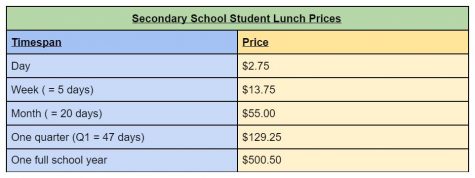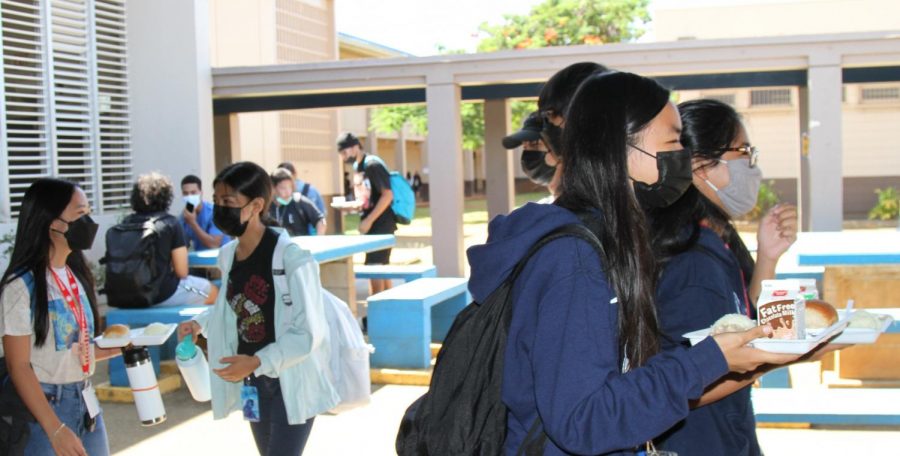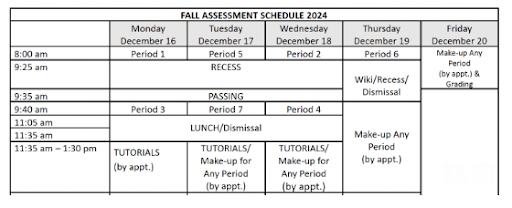Universal free meals should always be provided
Students leave the cafeteria with lunch, which is provided to all students at no cost this year.
Universal free meals should be available to students across the country even after the pandemic. It may be a surprise to some that the free lunch program for this school year was made possible because of the effort to minimize contact between students and cafeteria staff. Not only that, but it was also aimed at 12 million students experiencing food insecurity due to the COVID-19 pandemic as part of the Biden-Harris Administration’s American Rescue Plan Act. However, students’ food insecurity should be combated regardless of the pandemic.
Before the pandemic, the National School Lunch Program provided qualified students with free or reduced-price meals depending on their family income and the number of people in their household. However, this information can only tell us so much about a family’s financial situation. Granting free school meals to all students would lessen parents’ financial burden.
According to the Hawaii State Department of Education, before the pandemic, the price of secondary school lunches was $2.75 per student. Here’s the breakdown of how that cost compounds over time:

Although the amount of money families would pay toward school lunch might seem negligible at first, it compounds into something greater over time. The number may also further be multiplied if there is more than one child in the household, resulting in greater financial burden for families that do not qualify for free or reduced-price meals.
Another benefit of free school meals is that they would allow students to be more focused and ready to learn. As Feeding America, a nonprofit organization focused on combating hunger says, “Children need nutrients so they can grow, develop and focus on learning instead of thinking about the food they need.” Ultimately, they add, “they need to be able to concentrate in the classroom so they can succeed in school and be prepared to enter the workforce as adults.” Providing food and nurturing a healthy lifestyle would lead to student success.
Most students agree with the idea of free meals on campus. However, they raise some concerns regarding money, waste, and accessibility, all of which should be addressed if we want this program to succeed. Sailele Faaituala (‘25) agrees that free lunch would be beneficial, but is concerned that the school “might struggle on money since they don’t get the free lunch money.”
Schools do rely on students turning in their free and reduced lunch forms in order to qualify for Title I funding. Candice Hikiji, Waipahu High School’s Title I Coordinator, says that “your school is designated as a Title I school if 47.2% of students qualify for free-reduced lunch. This year, actually last year, just over 51%–over half–of our kids qualify. I think there should be more, but not everybody turns in the form.”
These documents are highly important to the school because approximately $1 million of Title I funds are allocated to fund certain teacher positions, resources (such as Chromebooks), and reduced fees or fee waivers for assessments such as the SAT and AP exams. Hikiji says, “even if all students can receive free lunches this year, we still needed to make sure that we had qualified, so that’s why [students] still have to turn in forms, even if all students got free lunch.” Making lunch free in future years would not impact our school’s budget so long as enough students would qualify for free and reduced meals, allowing us to maintain Title I status.
Ken Tungpalan (‘23) raises the concern that even though students receive free lunch this year, the long lunch lines near the office and cafeteria discourage him and many others from fully taking advantage of this opportunity.
To encourage more students to eat free meals, the school could open up more places to distribute food for students who do not have classes near the cafeteria or the front office.
Sean Valencia (‘23) raises a concern about waste: “One of the problems I found online was that kids waste their meals, and if we give them free meals, then more waste can be produced, but there’s definitely a lot of solutions for that.”
Valencia suggests, “If school just introduced a certain curriculum for students to learn how to compost, that can benefit the students and the food waste.”
In May of 2021, Senator Bernie Sanders introduced bill S.1503, more commonly known as the Universal School Meals Program Act of 2021, to the Senate. This bill aims to “amend the Child Nutrition Act of 1966 and the Richard B. Russell National School Lunch Act to make breakfasts and lunches free for all children.” At this time, it is co-sponsored by 12 other senators and was referred to the Senate Committee on Agriculture, Nutrition, and Forestry.
If we want this initiative to continue in future years, students can show support for the bill by writing to legislators regarding free access to meals and openly advocating for its benefits. Overall, if the program is implemented correctly, it would prove beneficial for many school communities. To rally the push to improve our education, we must begin by addressing basic needs.
Alyssa Salcedo is a 12th grader in the Academy of Professional & Public Services.
Jesselle Ann Morales is an 11th grader in the Academy of Health & Sciences.






